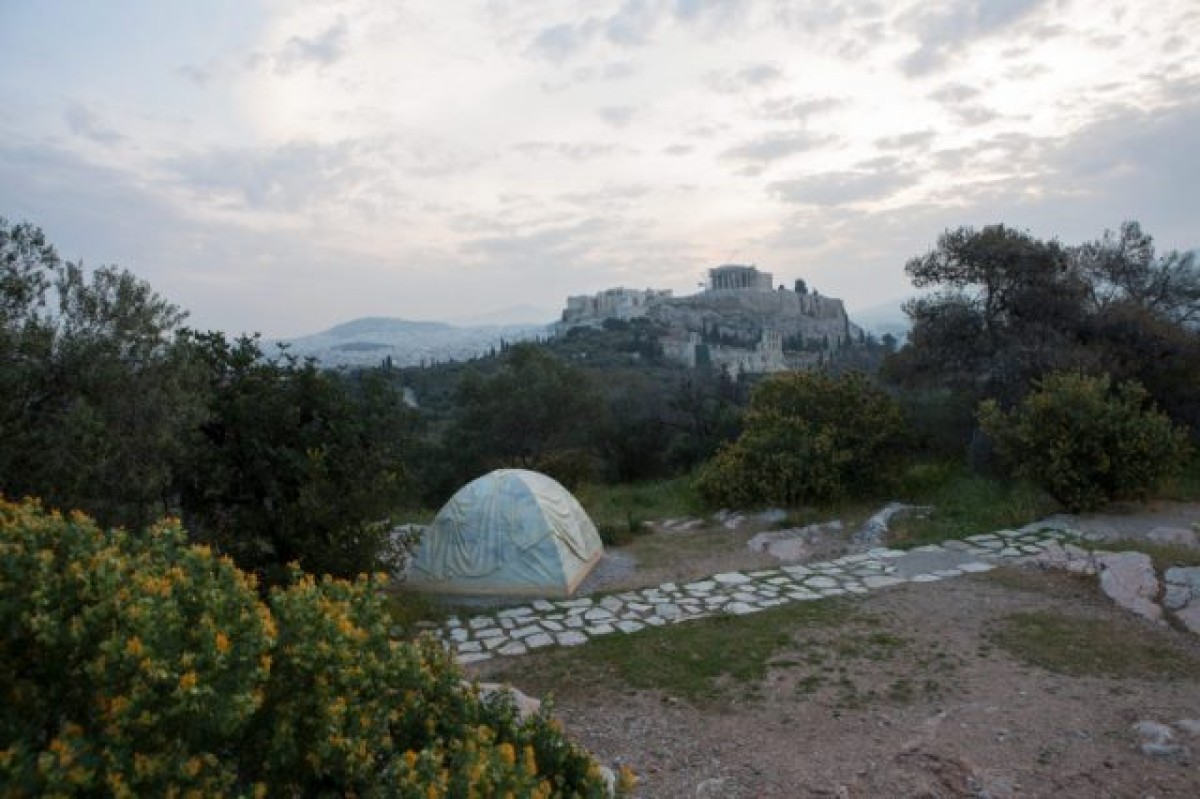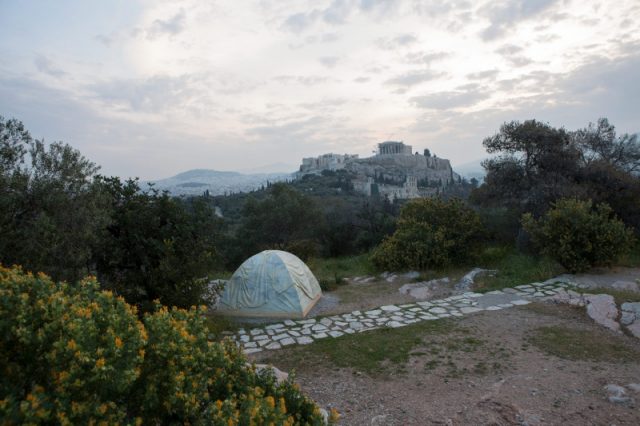A global Indigenous gathering

Rebecca Belmore, Biinjiya’iing Onji, 2017. Hand-carved marble. Collection of the artist © Rebecca Belmore, Photo: Scott Benesiinaabandan.
There’s no doubt about it – there is growing global interest in Indigenous art and film. The question now is how to shift that conversation to one led by Indigenous people.
That’s the topic that will be explored on September 13-15, when the AGO hosts the conference, aabaakwad (it clears after a storm). Inspired by the powerful exhibition, Rebecca Belmore: Facing the Monumental, the conference opens September 13 with keynote presentations from by Rebecca Belmore, Jolene Rickard and the AGO’s Curator of Indigenous Art, Wanda Nanibush. Guests include artists Robert Houle, Adrian Stimson, Lori Blondeau, Nadia Myre, Kent Monkman, Shelley Niro, Megan Tamati-Quennell, Brett Graham, Richard Bell, Greg Staats and more!
We spoke with Wanda Nanibush to learn more about this exciting gathering.
AGO: What inspired the title of the conference, aabaakwad (it clears after a storm)?
Nanibush: When conference co-organizer Aylan Couchie, and I saw the word we connected to its metaphorical meaning. I saw that moment when a storm ceases – the sky goes from black to blue, the winds calm, quiet ensues. Everything is transforming, but calm – it’s a space of contemplation.
The storms of colonialism are raging worldwide, but in the art world now there is a calm in that people around the globe are interested in Indigenous art. Let’s take that opportunity to talk and think about where we want the conversation to go.
AGO: What topics will be discussed at the conference?
Nanibush: We’ll have conversations on different art practices, working in communities, individual artist’s journeys, sovereignty, filmmaking, philosophy, memory and more.
AGO: Why is it critical to shift the global interest in Indigenous arts to one that is Indigenous-led?
Nanibush: The only people who can ensure that the drive for Indigenous art doesn't reproduce colonial desires are Indigenous artists, curators and thinkers. Part of decolonization is having more control over one’s own cultures and their circulation precisely because it has been controlled by others and used against you in the past.
AGO: Why is the time right for an event like this?
Nanibush: The world is waking up to the knowledge, beauty, and potential for change that lies in Indigenous communities globally. Indigenous artists are grappling with global issues in innovative ways that can help us begin to see a different future, where the Earth isn't destroyed by greed; where poverty might end; where homelessness is a distant memory, where all cultures are respected and can flourish.
What do you hope people take away from the gathering?
Nanibush: I hope participants fall in love with the diversity of Indigenous art and walk away with more knowledge about the Indigenous artists who worked so hard to get us where we are today.
Are you an AGOinsider yet? If not, sign up to have stories like these delivered straight to your inbox every week.

